Imagine stepping into your backyard and being greeted by a serene oasis, where the perfect canopy not only provides shade but transforms your outdoor space into a haven of comfort and style. Whether you’re a novice dipping your toes into the world of outdoor design or a seasoned pro seeking fresh inspiration, our guide, “15 Backyard Canopy Ideas for Your Next Project,” is your ticket to crafting a personal paradise.
From enhancing the aesthetic appeal to maximizing functionality, this list offers practical solutions that bring both beauty and value to your home. Each idea is carefully curated to spark your creativity, ensuring you feel empowered to turn any backyard into a treasured retreat. Embrace the joy of outdoor living, knowing that with the right canopy, your space can become a cherished extension of your home.
Choose Durable Canopy Materials
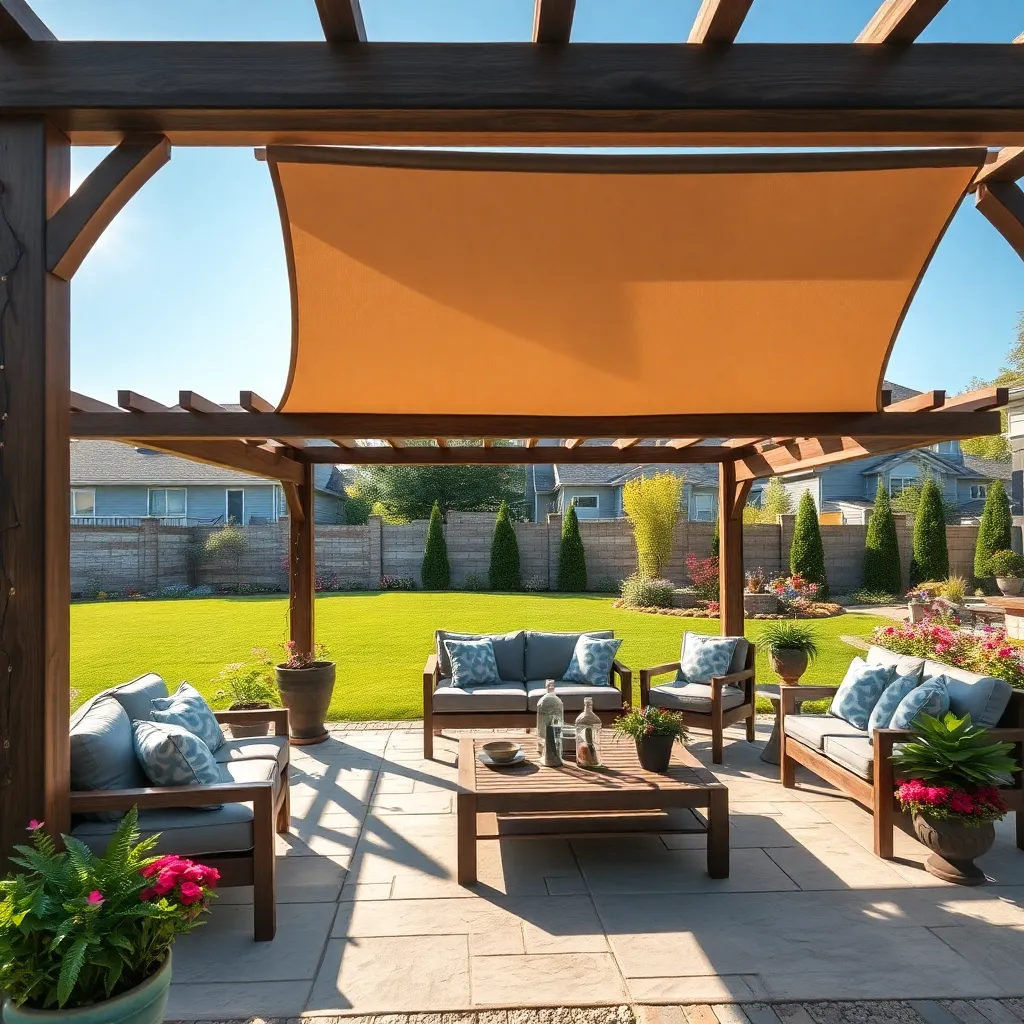
When selecting materials for your backyard canopy, prioritize those that offer durability and weather resistance. Polyester and polyethylene are popular choices due to their resilience against harsh weather conditions and UV rays. For a more permanent structure, consider materials like canvas, which provide a classic look and are treated to resist water and mildew. Ensure the canopy fabric is reinforced at stress points to enhance longevity.
For added durability, consider incorporating materials like aluminum or steel frames, which offer excellent support and stability. Opt for powder-coated finishes to prevent rust and corrosion, particularly if you live in a humid climate. If you’re handy with DIY projects, look into tensioning systems that allow you to easily adjust the fabric for optimal shade control. These advanced features will ensure your canopy remains a functional and stylish addition to your backyard for years to come.
Incorporate Adjustable Shade Features
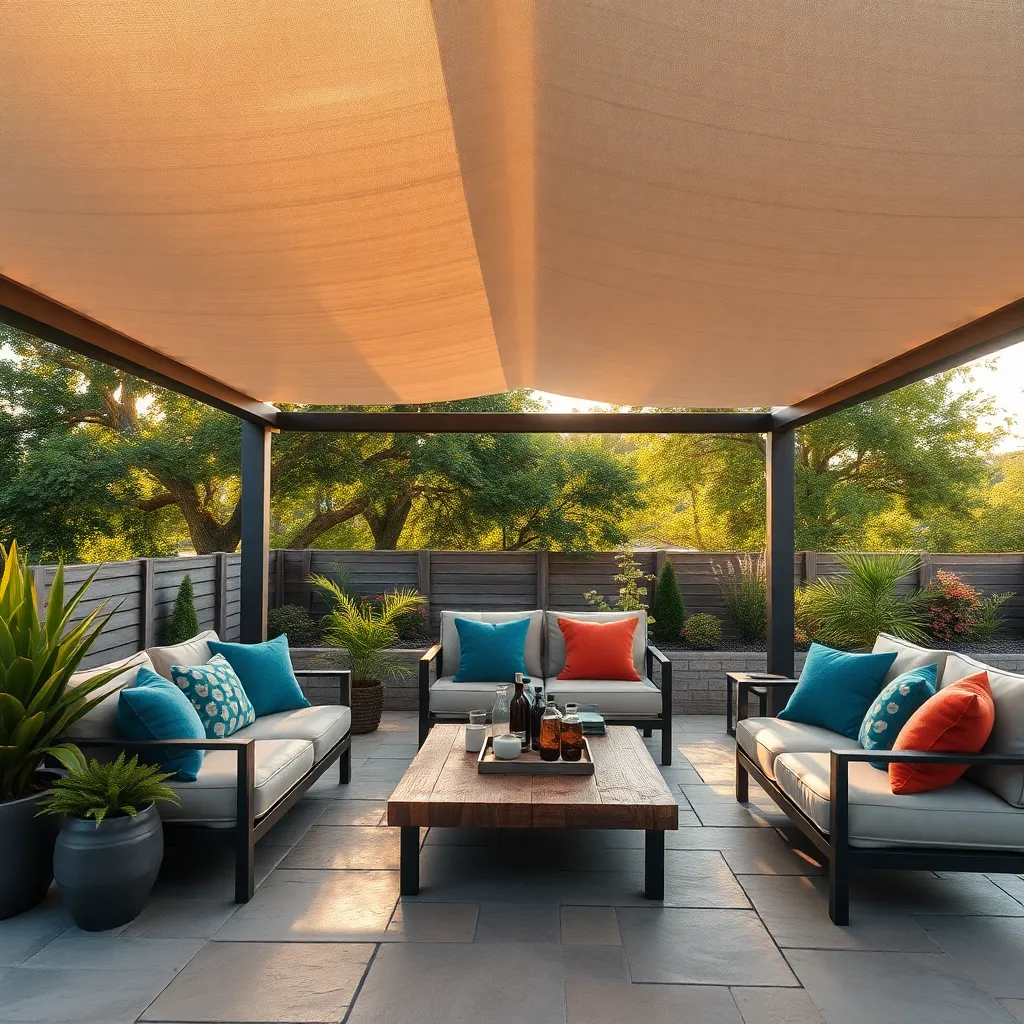
Adding adjustable shade features to your backyard canopy can significantly enhance its functionality and comfort. Consider incorporating a retractable awning or pergola with adjustable louvers. These options allow you to control the amount of sunlight that filters through, providing flexibility for different weather conditions. For a more straightforward DIY approach, install shade sails with moveable hooks or sliding tracks, which can be easily adjusted as needed. Choose materials like UV-resistant fabric or powder-coated aluminum for durability and low maintenance.
For those looking to add an advanced touch, consider motorized shade systems equipped with remote controls. These systems can be programmed to adjust automatically, responding to sunlight levels throughout the day. When installing such features, ensure the structure is sturdy enough to support the additional weight and movement. Proper anchoring and reinforced supports are critical, especially for motorized options, to withstand wind and rain. By combining these adjustable elements, you can create a versatile outdoor space that adapts to your needs, making your backyard a comfortable retreat.
Opt for Eco-Friendly Canopy Fabrics
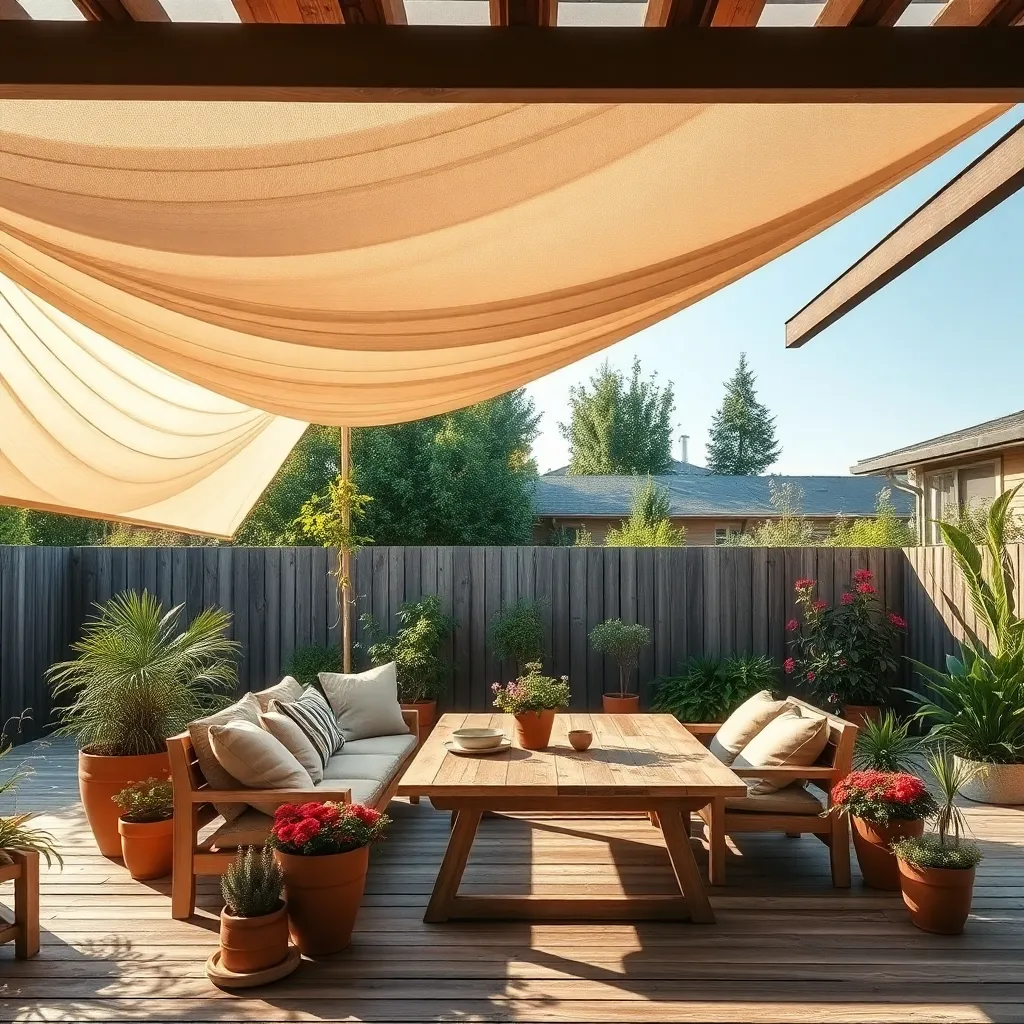
When choosing a canopy fabric for your backyard project, consider eco-friendly options that are not only sustainable but also durable. Recycled polyester and organic cotton are excellent choices, offering UV resistance and weather durability. These materials reduce your environmental footprint while providing a stylish and functional shelter. For beginners, start with recycled polyester for its easy maintenance and availability in various colors and patterns.
Advanced gardeners can explore hemp canvas, which is biodegradable and highly resistant to mold and mildew, making it ideal for humid climates. Ensure your canopy is well-ventilated to maximize airflow and comfort during hot weather. Consider using a modular design with interchangeable panels, allowing you to adjust the shade as needed and easily replace parts without discarding the entire structure. This not only extends the life of your canopy but also supports eco-friendly living.
Add Solar-Powered Lighting Fixtures
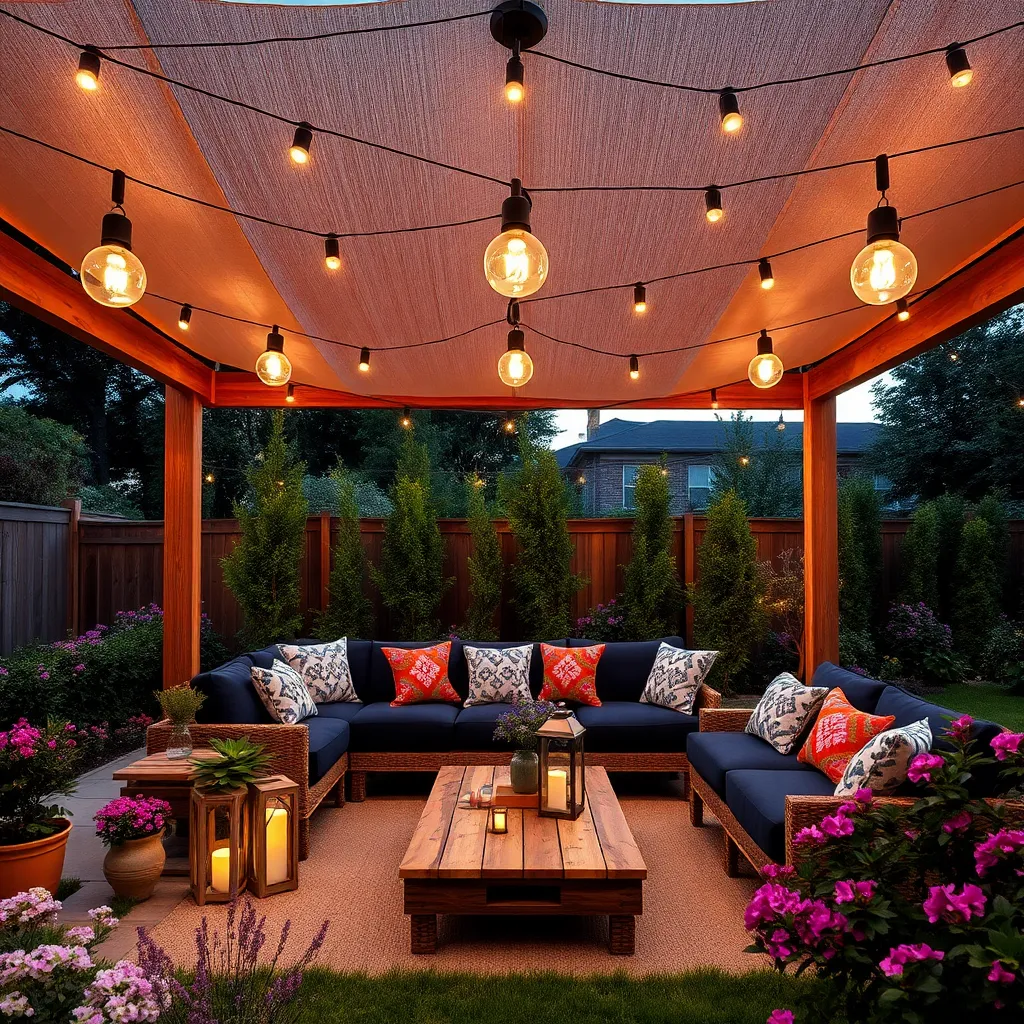
Adding solar-powered lighting fixtures to your backyard canopy is an excellent way to enhance both functionality and ambiance. These eco-friendly lights are perfect for beginners, as they require minimal installation—simply position them where they will receive ample sunlight during the day. Consider using string lights or lanterns with built-in solar panels to create a warm and inviting atmosphere under your canopy. Choose fixtures with LED bulbs for energy efficiency and longer-lasting illumination.
For those looking to take their canopy lighting to the next level, explore options like solar-powered motion sensor lights or dimmable fixtures. These advanced features provide flexibility and control over the brightness and timing of your lighting. When selecting lights, ensure they are weather-resistant to withstand outdoor conditions year-round. Mount the fixtures strategically around the canopy’s perimeter to maximize light coverage and create a cozy, well-lit environment perfect for evening gatherings.
Utilize Retractable Canopy Systems
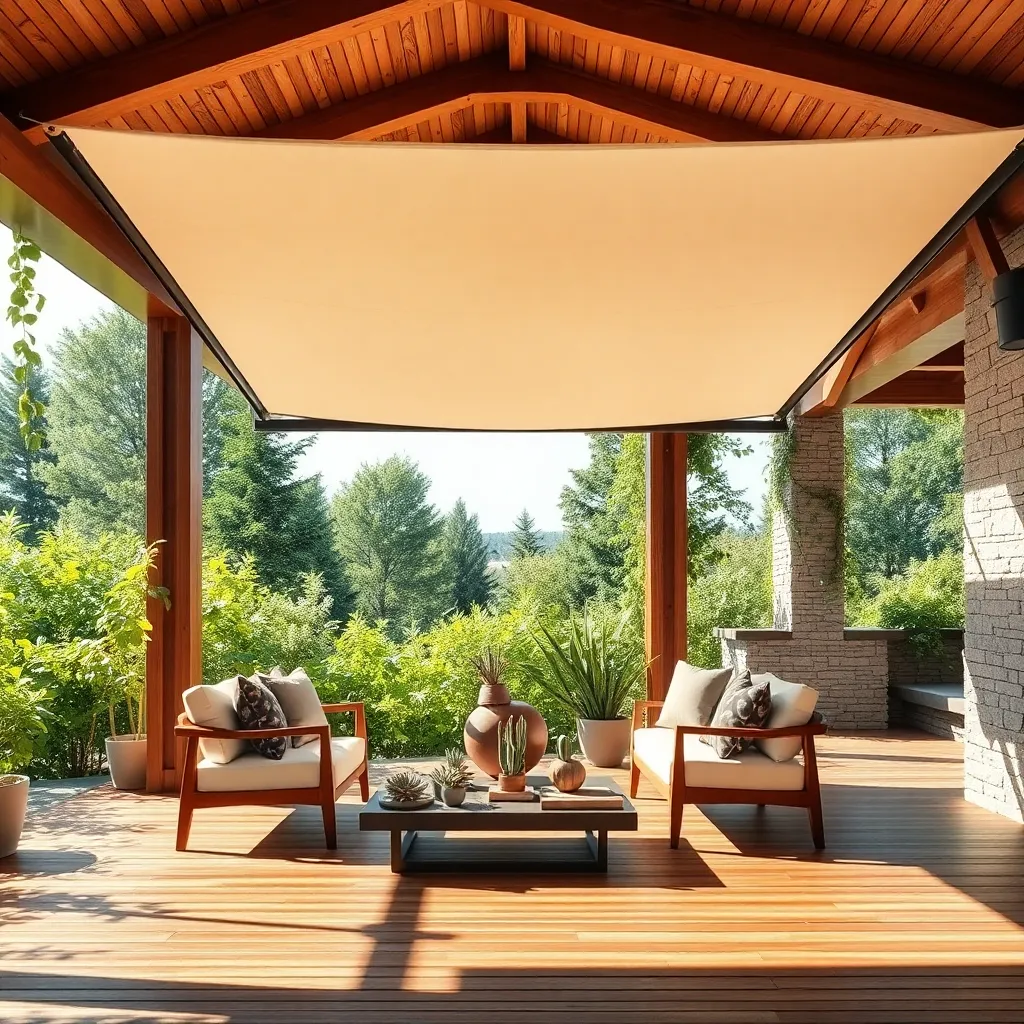
Retractable canopy systems offer a versatile solution for creating shaded areas in your backyard, allowing you to enjoy the outdoors in comfort. Installation is straightforward and typically involves mounting tracks to your home’s exterior or a freestanding frame. Opt for materials like weather-resistant polyester or acrylic fabric to ensure durability. For a beginner-friendly approach, consider pre-made kits that come with all necessary hardware and detailed instructions.
For those seeking a more advanced setup, integrating a motorized retractable mechanism can provide convenience with just the push of a button. Customization options abound, from choosing UV-protective fabrics to adding side panels for extra privacy. Ensure your chosen system matches the scale of your space; for instance, a 10×12 feet canopy is ideal for most patios.
- Consider adding LED lighting strips to the underside for nighttime ambiance.
- Regular maintenance, such as cleaning the fabric and lubricating the tracks, will keep your canopy functioning smoothly.
Enhance Ambiance with String Lights
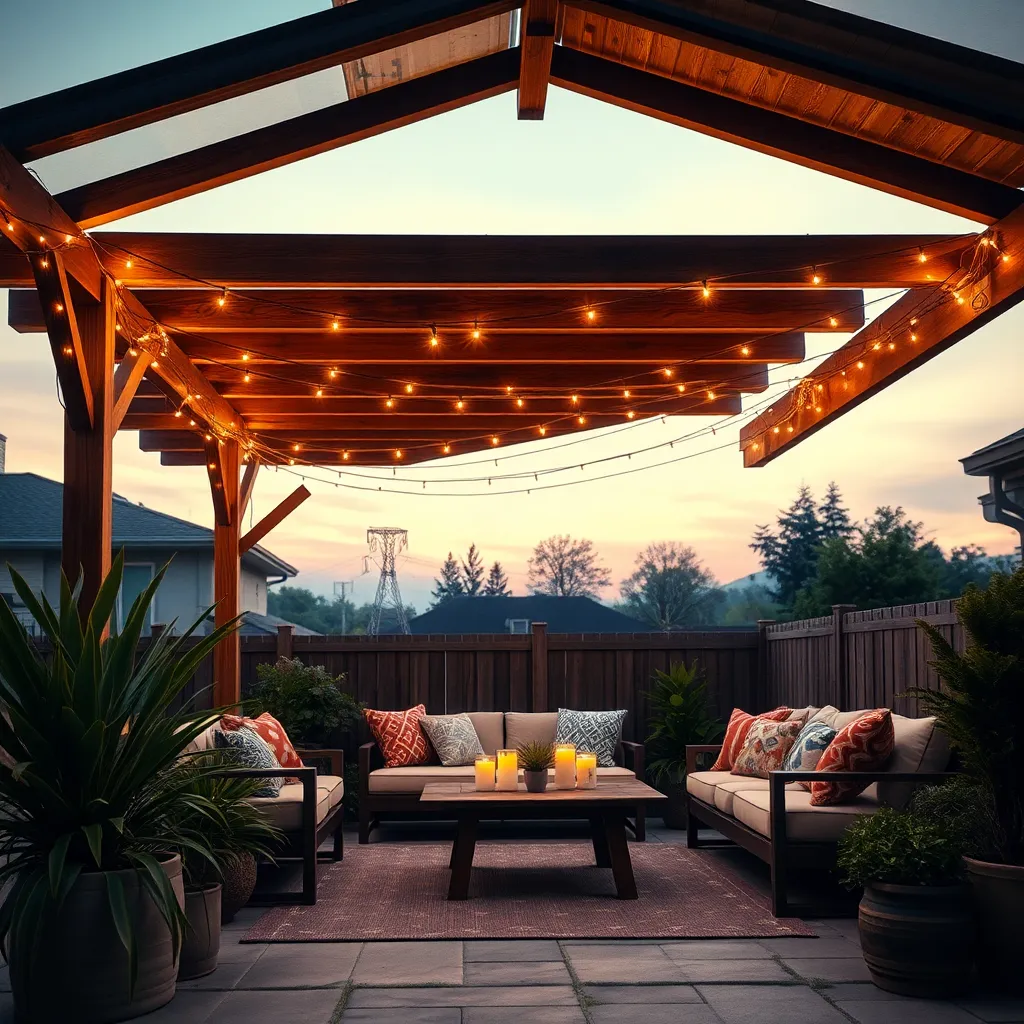
String lights are a simple yet transformative addition to any backyard canopy, enhancing ambiance and creating a warm, inviting atmosphere. Start with basic white or warm white LED string lights as they are energy-efficient and weather-resistant, making them ideal for outdoor use. Secure lights along the perimeter of your canopy using hooks or clips, ensuring they are evenly spaced for a balanced glow. For beginners, opt for solar-powered string lights that are easy to install and eliminate the need for extension cords or outlets.
For those looking to elevate their design, consider incorporating unique bulb shapes or colors to add character and personality to your space. Edison-style bulbs offer a vintage feel, while multicolored options can create a festive environment. Suspend lights in a crisscross pattern across the canopy for an artistic touch, or drape them vertically for a cascading effect. When hanging the lights, make sure to use sturdy materials like weatherproof nylon ropes or stainless steel cables to withstand different weather conditions and keep your setup safe and secure.
Secure Canopies with Sturdy Anchors
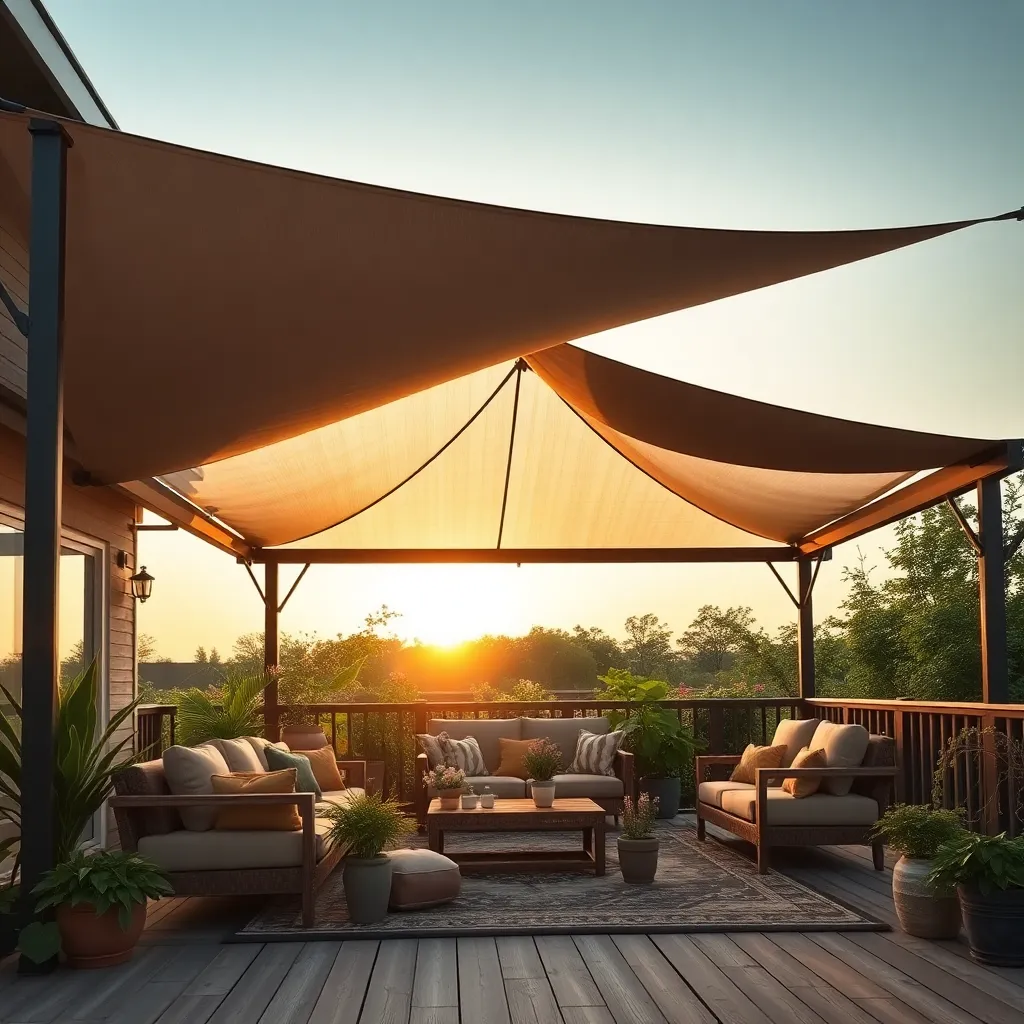
To ensure your canopy withstands various weather conditions, it’s crucial to secure it with sturdy anchors. Begin by selecting anchors that are appropriate for the ground type in your backyard, such as spiral stakes for soft soil or concrete anchors for patios. For enhanced stability, consider using guy lines connected to the canopy corners, which can be anchored into the ground or tied to nearby stable structures like trees or fence posts. This setup not only provides durability but also peace of mind during unexpected weather changes.
For those seeking advanced solutions, incorporating weighted bases is an excellent option, especially on hard surfaces where traditional stakes can’t be used. Fill these bases with sand or water to provide the necessary weight. Additionally, if your canopy is a permanent fixture, consider using steel posts with concrete footings for maximum stability. This method not only secures your canopy effectively but also adds a sleek, modern aesthetic to your backyard oasis. Whether you’re a beginner or an experienced DIYer, these anchoring techniques will help you create a secure and inviting outdoor space.
Select Weather-Resistant Canopy Colors
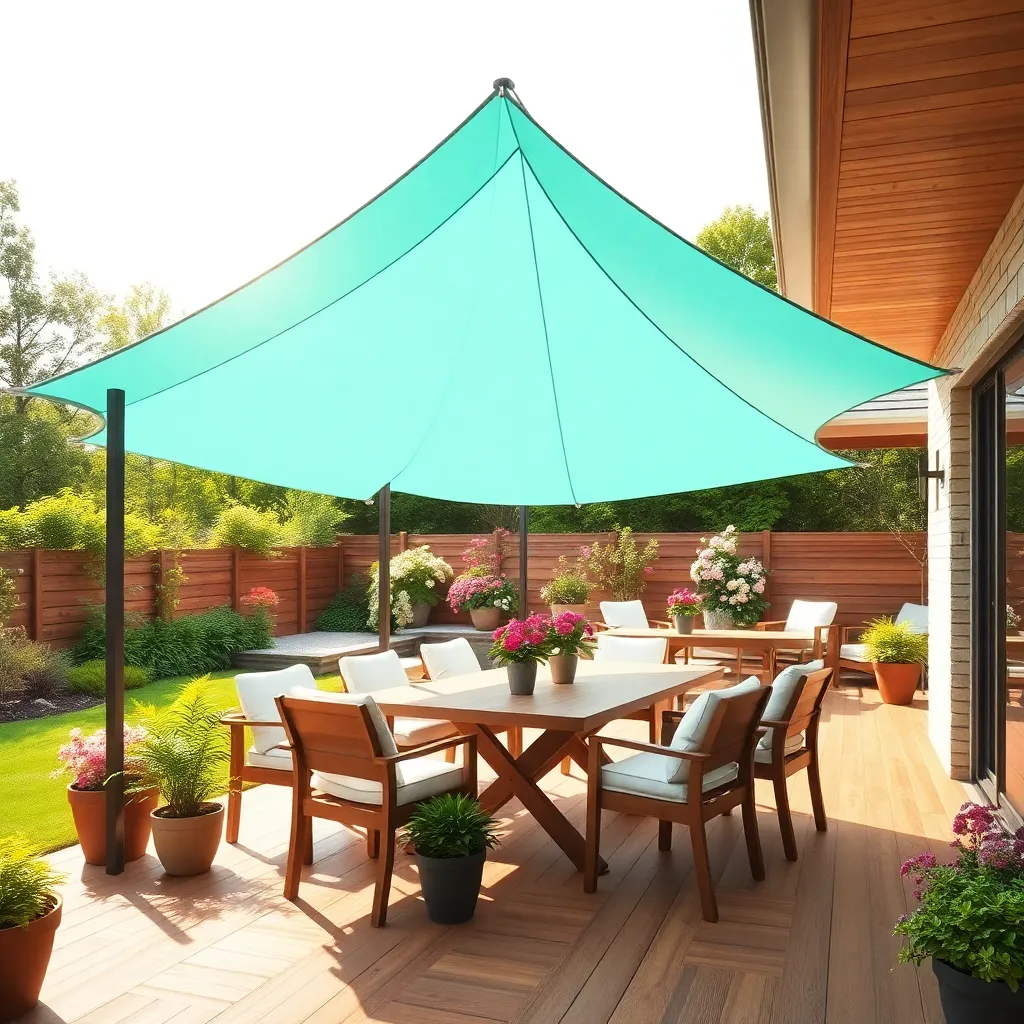
When choosing a canopy color, it’s essential to select shades that can withstand the elements and maintain their appearance over time. Opt for colors with UV-resistant properties, as these will help preserve the fabric’s vibrancy even under intense sunlight. Consider earthy tones like taupe or forest green, which tend to blend seamlessly with natural surroundings while minimizing the appearance of dirt and stains.
For those interested in more vibrant hues, look for canopies made from solution-dyed acrylic fabrics, which offer excellent colorfastness and durability. Advanced tip: If you’re in an area prone to extreme weather, consider investing in a canopy with a double-coated design for added protection against rain and wind. By selecting weather-resistant colors and materials, your canopy will not only be functional but also aesthetically pleasing throughout the seasons.
Create Multi-Level Canopy Layers
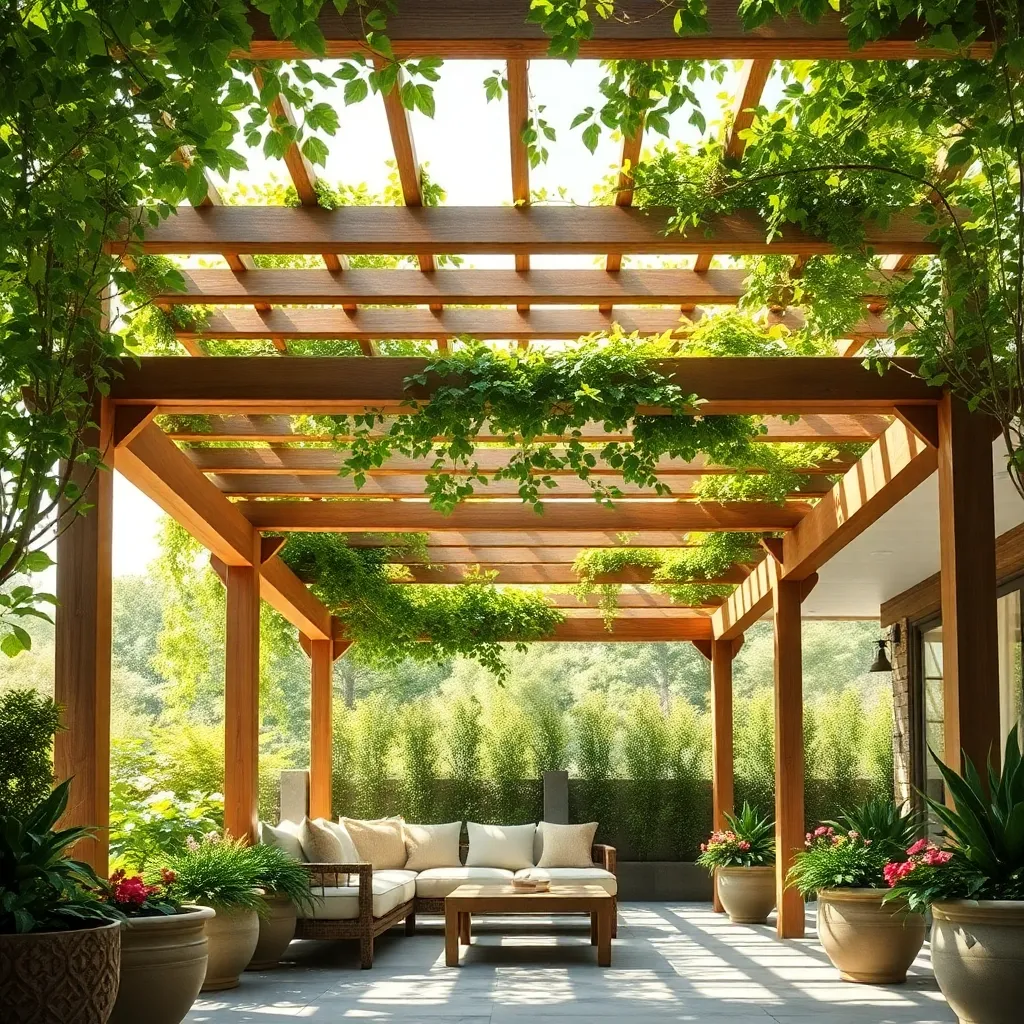
Creating multi-level canopy layers in your backyard adds dimension and functionality to your outdoor space. Start by integrating a combination of natural and artificial materials to achieve a seamless look. Use tall trees or large pergolas as the top layer, providing broad coverage and a natural feel. Consider using hardwoods like cedar or treated pine for pergolas due to their durability and resistance to weather. For the middle layer, incorporate smaller structures like awnings or shade sails. Choose fabrics like polyester or acrylic that are UV-resistant to ensure longevity and protection from the sun.
For the lower canopy, add elements like outdoor umbrellas or canopies with adjustable heights to create flexible shade options. This layer offers easy versatility, allowing you to adjust based on the time of day or season. If you’re feeling creative, consider using climbing plants like clematis or wisteria to drape over trellises for a lush, natural look. These plants not only add beauty but also enhance the cooling effect by blocking sunlight. To ensure a cohesive design, maintain a consistent color palette throughout your layers, tying together the various elements for a harmonious backyard retreat.
Include Natural Elements for Cooling
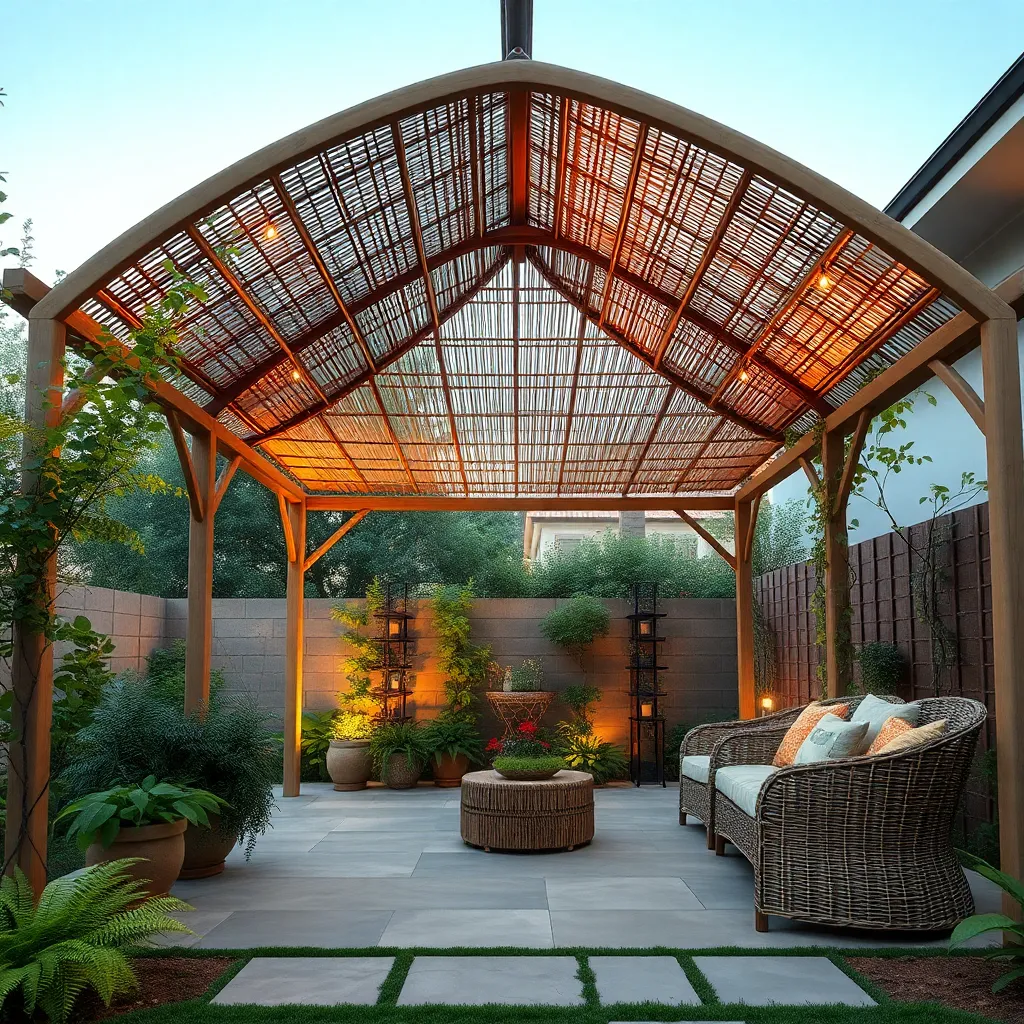
Integrating natural elements into your backyard canopy not only enhances aesthetics but also provides effective cooling. Consider planting fast-growing trees like willows or poplars around the perimeter of your space. These trees offer both shade and a natural cooling effect as their leaves transpire, which can significantly lower the surrounding temperature. For immediate relief while waiting for trees to mature, try adding vertical gardens on freestanding panels adjacent to your canopy. These can be filled with lush, cooling plants such as ferns or ivy, which thrive in shaded environments.
For a more advanced approach, design your canopy with a green roof. This involves covering the top of your structure with a layer of vegetation, creating a living ecosystem that not only insulates but also cools the air through evaporation. Choose lightweight, drought-resistant plants like sedums or small succulents to keep maintenance low and ensure the structure can support the weight. Additionally, incorporating natural stone or water features nearby can enhance the cooling effect and create a tranquil atmosphere, making your backyard retreat even more inviting.
Install Built-In Seating Options
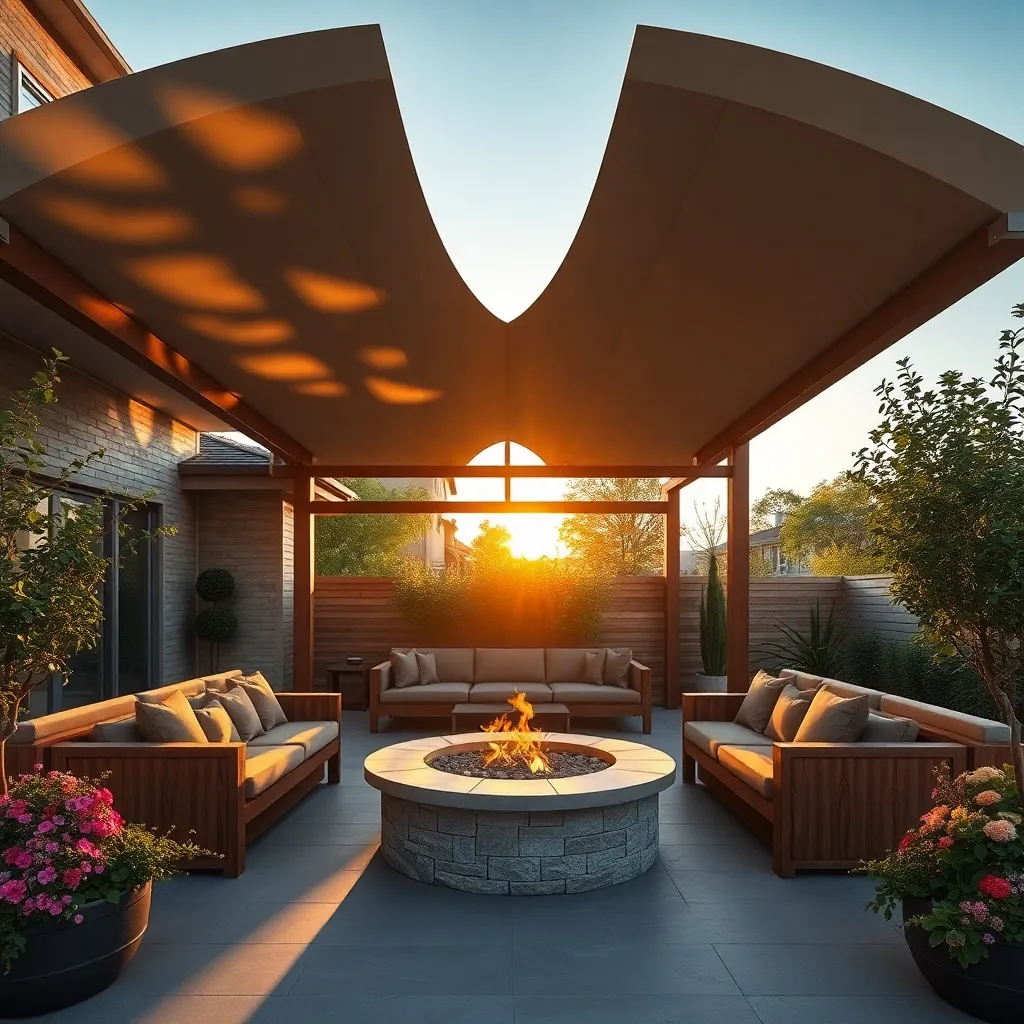
Integrating built-in seating into your backyard canopy area can transform your space into a functional and stylish haven. For a simple start, consider using durable materials like weather-resistant wood or composite decking, which offer both longevity and aesthetic appeal. Measure the dimensions carefully to ensure ample seating space, typically aiming for a depth of 18-24 inches for comfort. Beginners can start by installing a straightforward bench along the perimeter of the canopy, adding outdoor cushions for extra comfort.
For a more advanced touch, try incorporating storage underneath your seating to maximize utility. Hinged lids or sliding panels can provide easy access to stowed items, keeping your space tidy and organized. Those with more experience might explore integrating planter boxes at the ends of the seating to blend natural elements seamlessly with your structure. Remember to use rust-resistant fasteners and a good sealant to protect against the elements, ensuring your seating remains inviting and robust over time.
Use Patterned Canopy Fabrics for Style
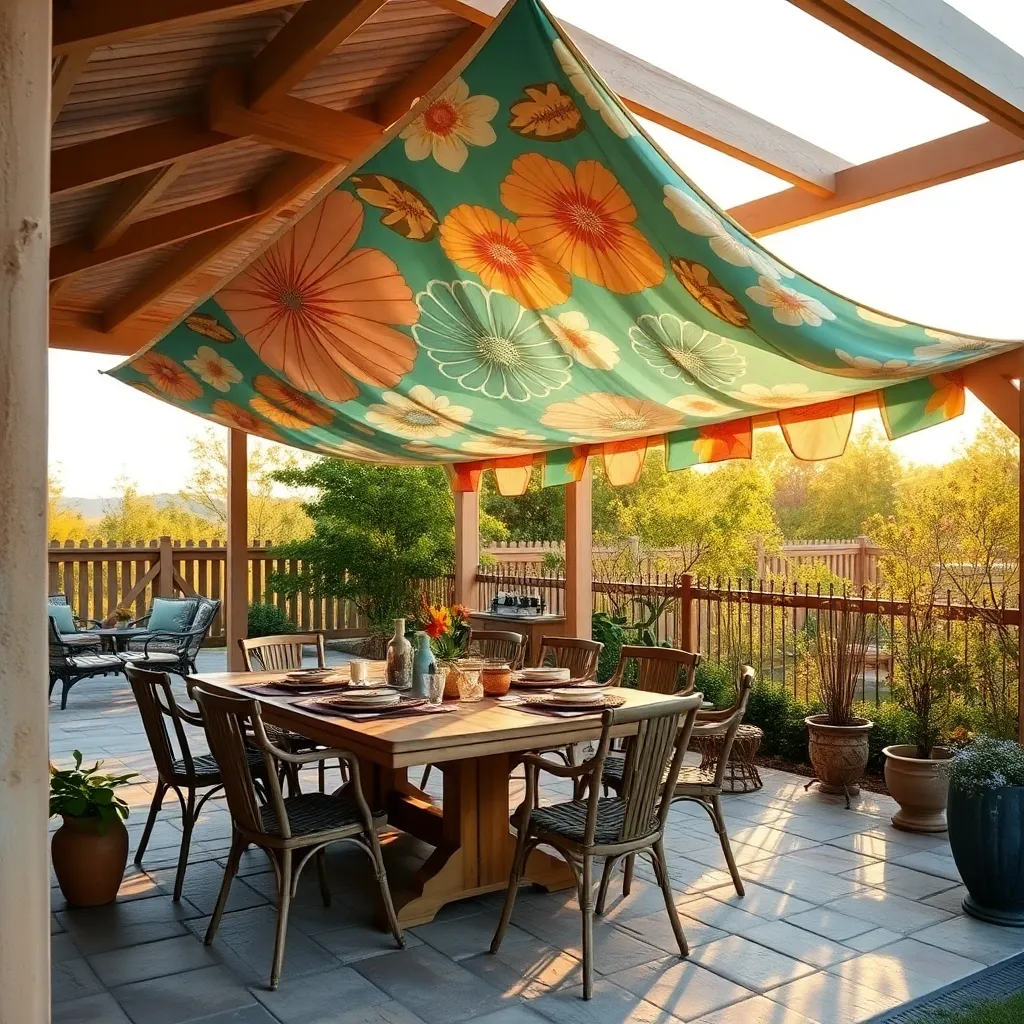
Adding patterned canopy fabrics to your outdoor shelter can instantly elevate your backyard’s style and comfort. Choosing vibrant or subtle patterns can create a unique ambiance, whether you want a bold statement or a soothing retreat. Look for durable materials like polyester or acrylic that are UV-resistant and water-repellent, ensuring your canopy stays in top condition through various weather conditions. For beginners, stick to simple geometric patterns that can easily blend with existing outdoor decor.
For those looking to add a touch of sophistication, consider mixing and matching patterns by layering different fabrics. This advanced technique involves using a solid base fabric with a patterned overlay, creating depth and visual interest. When selecting fabrics, aim for a standard width of 60 inches to ensure adequate coverage and consider hemming the edges to prevent fraying. Experiment with color combinations that complement your garden’s natural palette, and remember that removable ties or clips can make seasonal fabric changes a breeze.
Integrate Canopy with Existing Structures
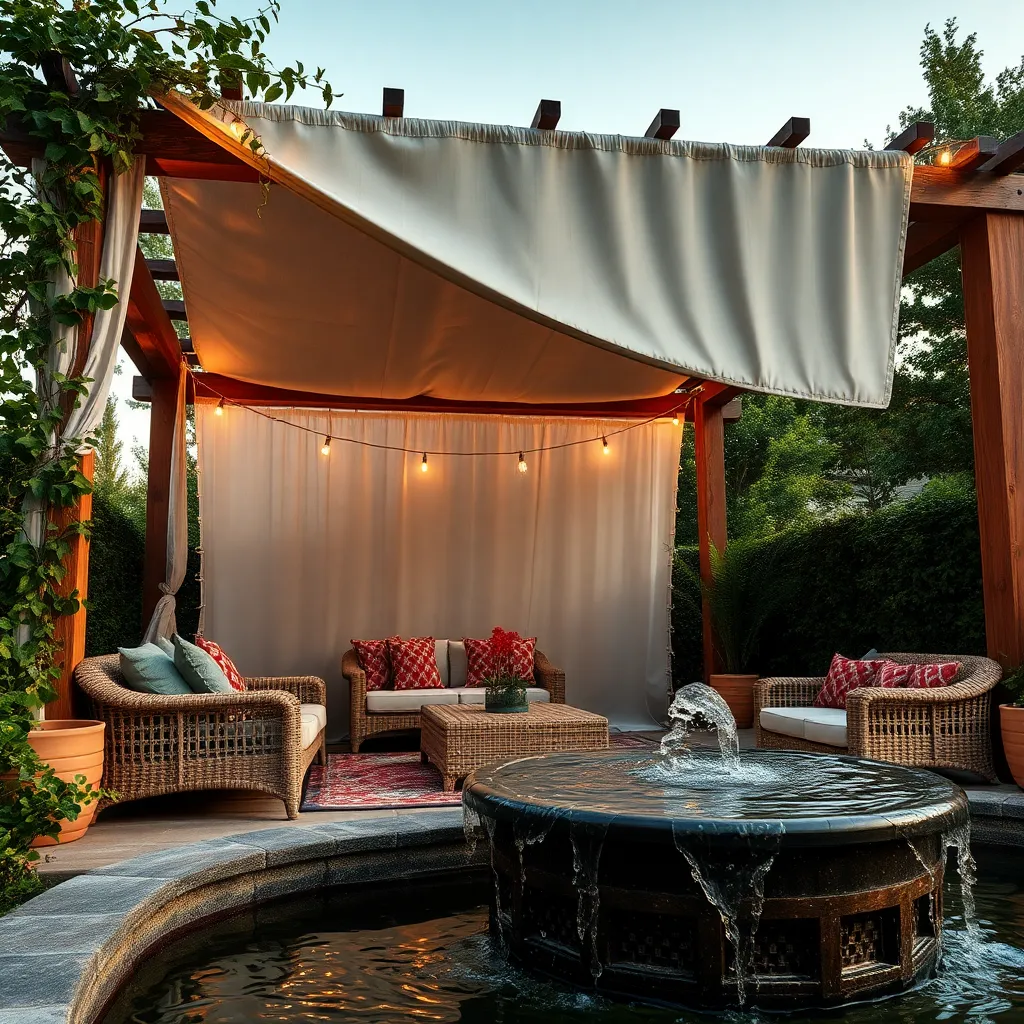
When integrating a canopy with existing structures, consider using existing walls, posts, or beams to anchor your design. This not only saves on materials but also ensures a seamless look that complements your current setup. For beginners, using a pre-made retractable awning can be a straightforward option, providing flexibility and ease of use. More advanced DIY enthusiasts might consider custom-built canopies using weather-resistant fabrics like acrylic or polyester, which can be attached via grommets or rope for a tailored fit.
To ensure stability and durability, use high-quality hardware such as stainless steel brackets and screws, especially in areas prone to harsh weather. For a polished finish, choose materials that match or complement the color and style of your home or deck. This could mean selecting a canopy fabric in a neutral tone or using wood stains that harmonize with your existing outdoor furniture. Remember, a well-integrated canopy not only enhances your backyard’s aesthetic but also increases its functionality, providing shade and comfort year-round.
Customize Canopy Sizes for Space Needs
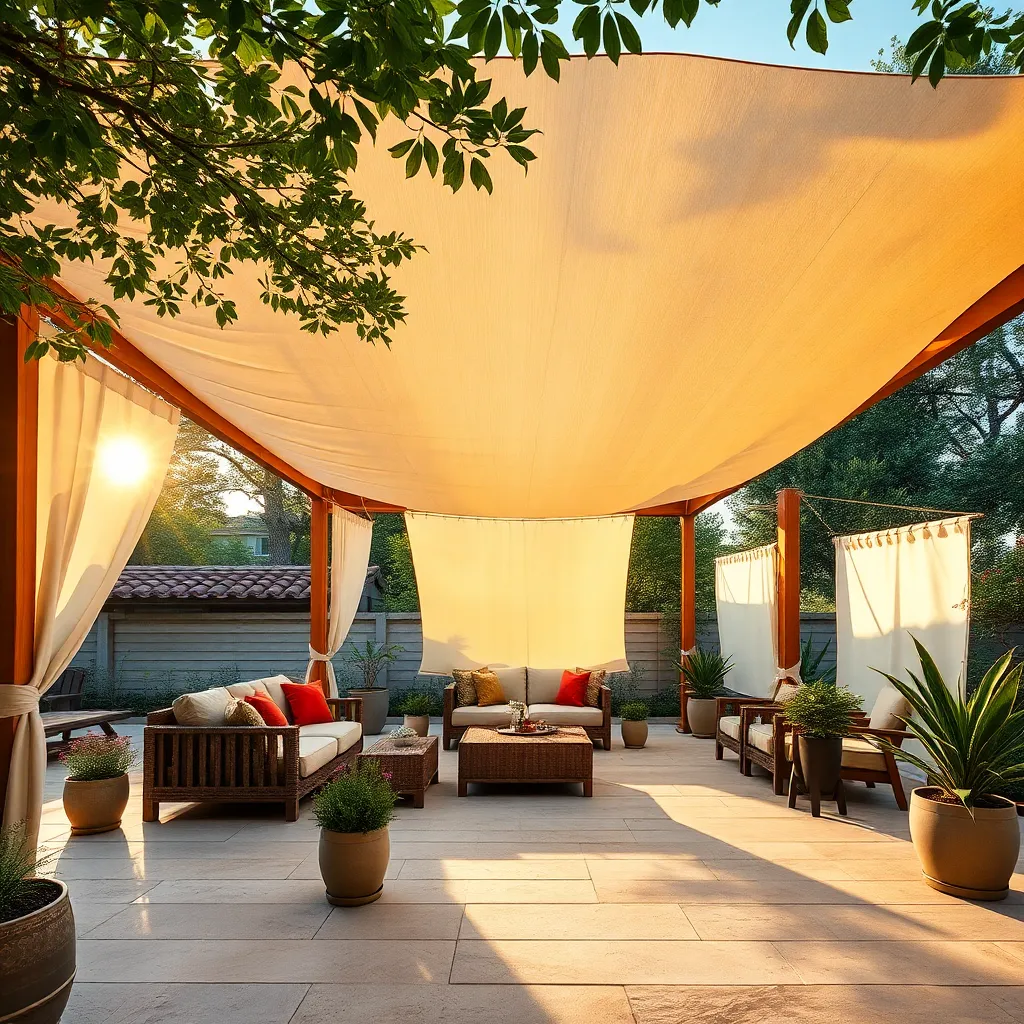
Customizing your canopy size to suit your space needs is an essential step in maximizing both functionality and aesthetics in your backyard. Start by measuring the area you want to cover, ensuring you allow for any existing features like trees or garden beds. Opt for materials like aluminum or treated wood for the structure, which offer durability and a clean finish. For the canopy fabric, consider UV-resistant polyester or acrylic to protect against sun exposure and extend the life of your investment.
For those seeking a tailored fit, modular canopy systems are a fantastic option. These systems allow you to add or remove sections easily, offering flexibility for different occasions. Advanced builders can consider integrating retractable canopies, which provide shade only when needed. Keep the installation straightforward with bolt-together connectors or pre-drilled kits, ensuring a seamless assembly process. Whether you’re a novice or a seasoned DIY enthusiast, these strategies will help you create a space that’s both practical and inviting.
Incorporate Ventilation for Airflow

Ensuring proper ventilation in your backyard canopy is crucial for maintaining a comfortable and fresh environment. Begin by integrating mesh panels or vents at the top of the canopy to promote air circulation. These features allow hot air to escape and cool breezes to enter, making your outdoor space more enjoyable during warmer months. Choose materials like breathable fabrics or canvas that facilitate airflow while providing shade.
For a more advanced approach, consider installing adjustable louvers or slats in the canopy roof. This allows you to control the amount of air and light entering the space, adapting to changing weather conditions. Additionally, positioning your canopy to take advantage of prevailing winds can enhance natural airflow. Keep the area around the canopy free of obstructions such as dense foliage or walls to ensure uninterrupted air movement.
Conclusion: Creating Beautiful Outdoor Spaces
In exploring the ’15 Backyard Canopy Ideas for Your Next Project’, we’ve uncovered a variety of creative ways to transform your outdoor space while fostering deeper connections. From the romantic allure of string lights to the simple elegance of sail shades, each canopy idea not only enhances your backyard’s aesthetics but also sets the stage for memorable moments with loved ones. Key concepts include the importance of ambiance, the role of personal touches, and the value of shared spaces in nurturing strong relationships.
As your next actionable step, choose one canopy idea that resonates with your relationship goals and begin planning its implementation this weekend. Whether it’s a cozy pergola for intimate chats or a vibrant gazebo for family gatherings, taking this step can significantly enrich your relational experiences.
Don’t forget to save or bookmark this article for future inspiration and guidance. Each idea serves as a reminder that investing in your environment is an investment in your relationships. As you embark on this journey, remember that the right setting can be a powerful catalyst for relationship success, turning ordinary days into extraordinary memories. Embrace the transformation and watch your relationships flourish.
